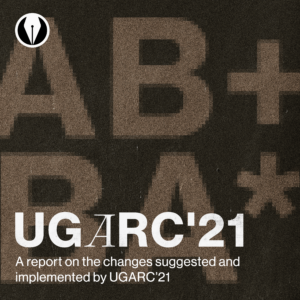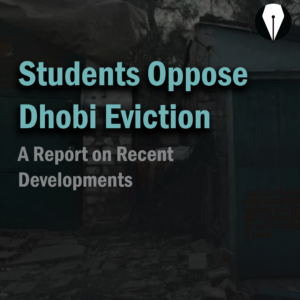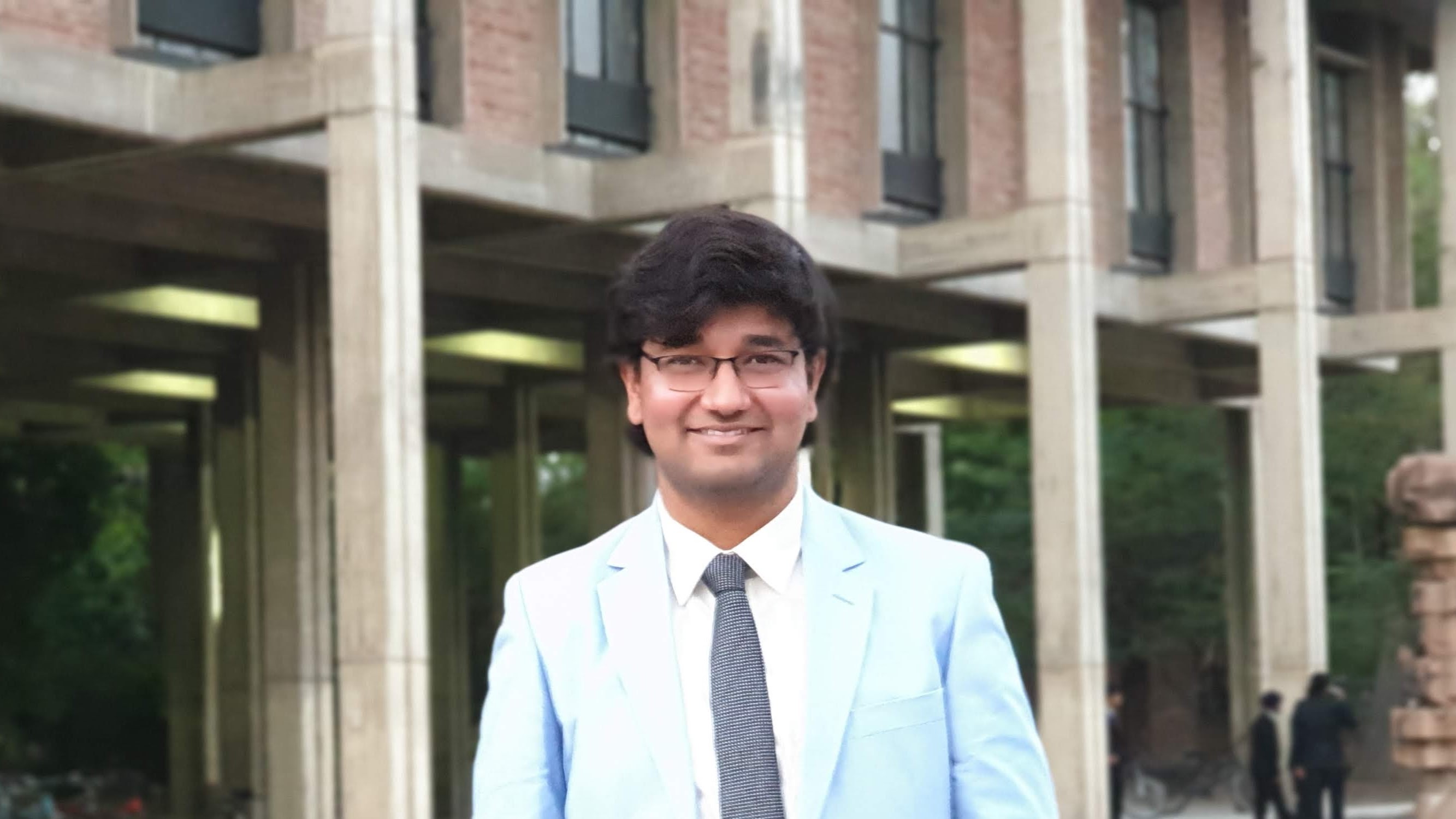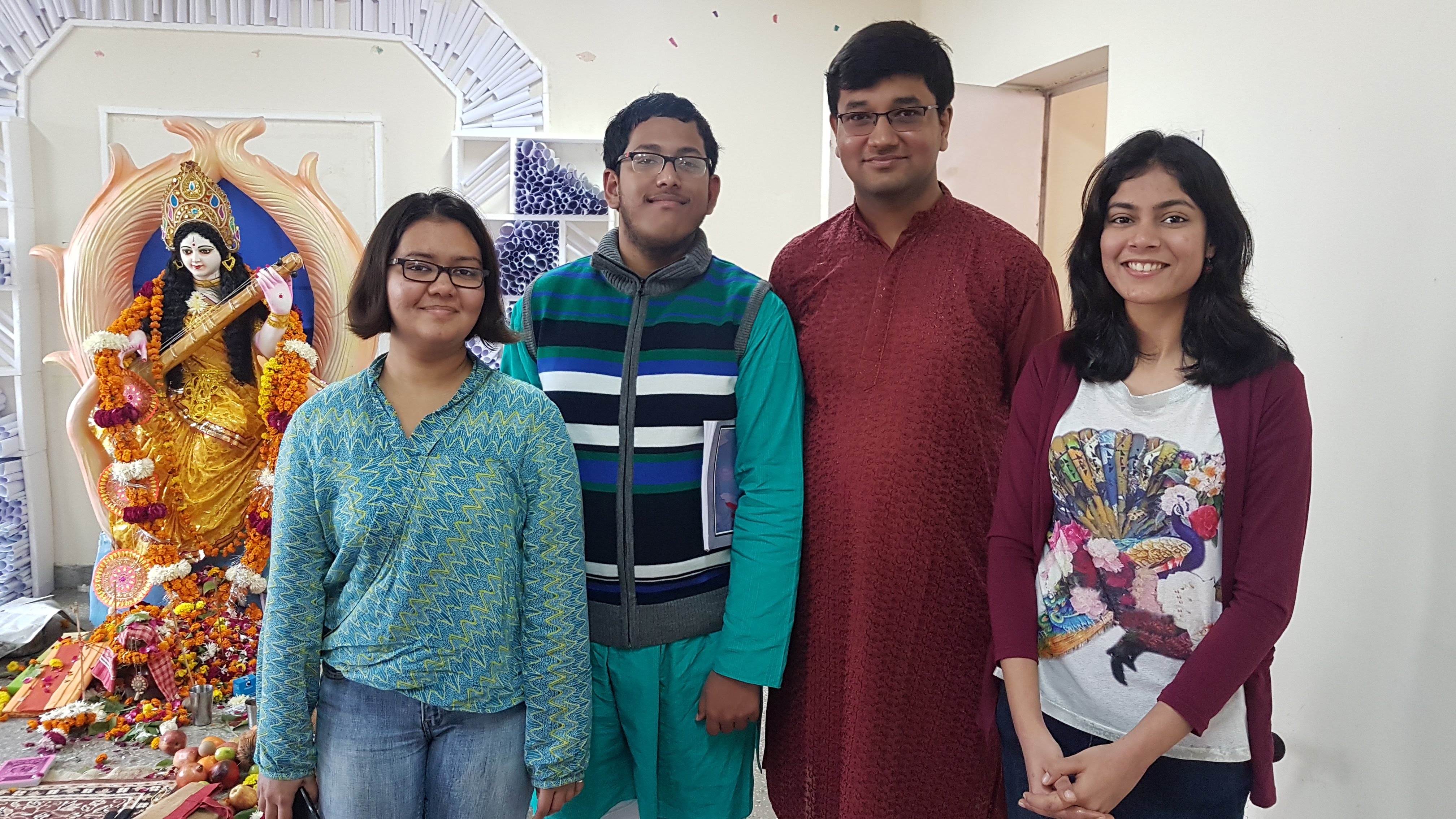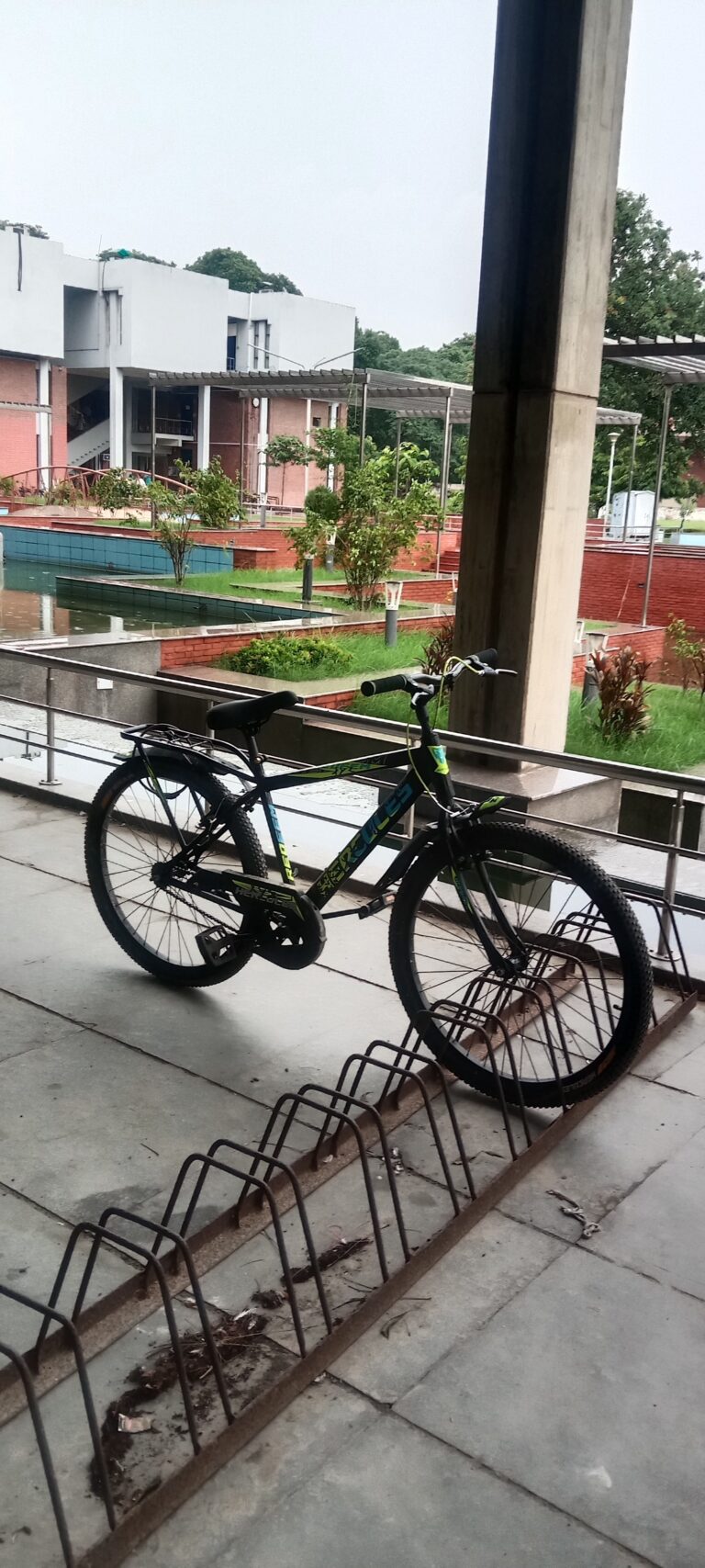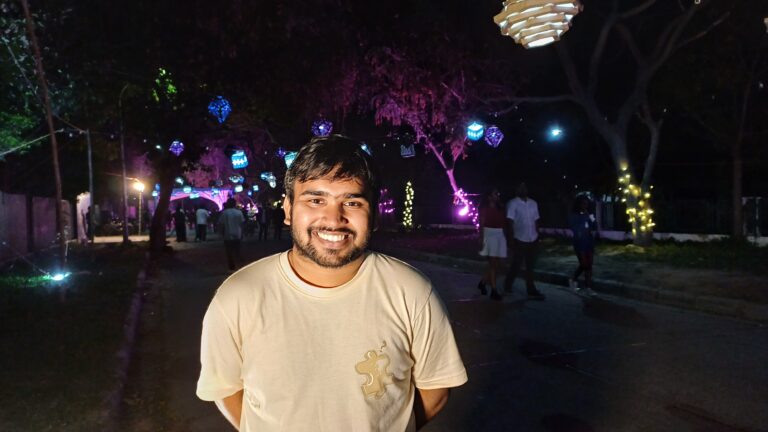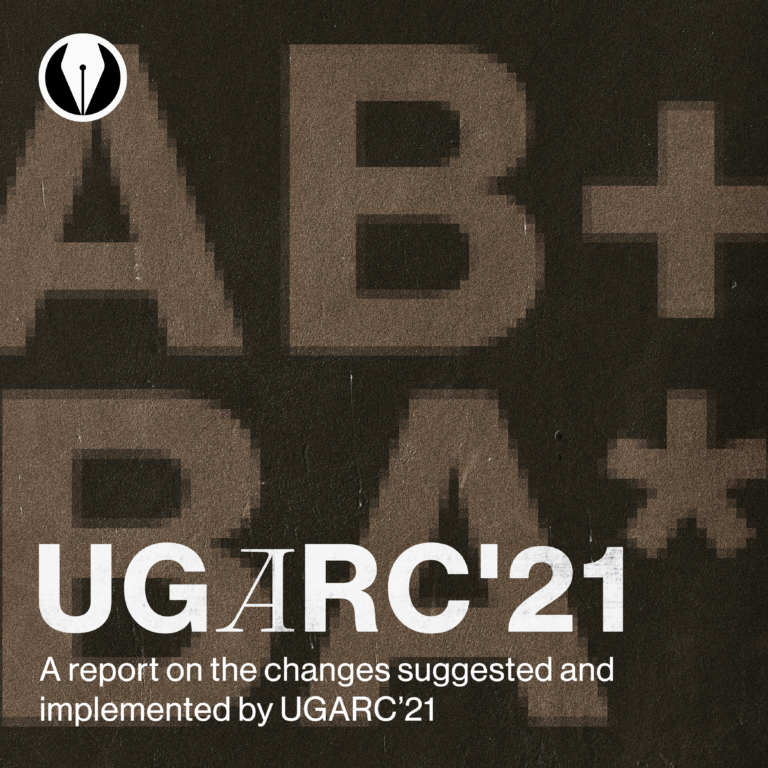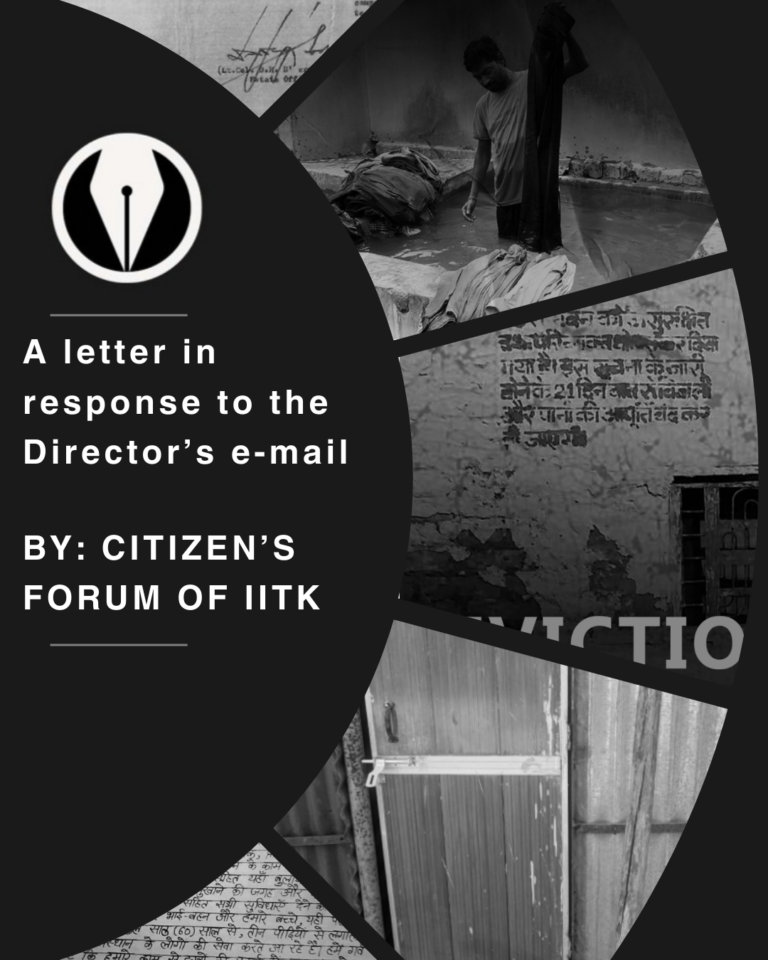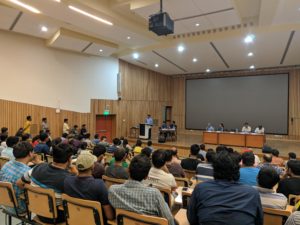Mr. Sagnik Bhattacharya is an undergraduate student in the Electrical Engineering Department from the Y15 batch. Full of words of wisdom for the naive, Here’s his story as he leaves.
I remember the first time I went to the PK Kelkar Library and looked at the vast collection of books, and the goosebumps I had when I first roamed about in the Physics section. It was a few days into my first year, and when I called home later that night, I excitedly declared to my mother that if I read one of those many, many books per month, I’ll have learned a lot before it was time to graduate. Needless to say, like most of the plans I had made in the first few weeks that I had spent on campus, this did not work out. It did not work out to such an extent that the only time in the past year that I have stepped into the library (apart from graduation formalities) has been to get print-outs and one other time to roam in the physics section, trying to recapture the naive awe from my first year. What happened in between is something I will call the Four-year transform and will try and spend the rest of this essay trying to elucidate the properties of this strange beast.
Here’s how the Four-year transform operates
On entering the campus, we are faced with a multitude of choices about everything related to campus life. Some will probably not influence much of our future lives, like the question of what to do with the roll of TA101 sheets after the course ends. Others do have some ramifications later on. Questions in the early days like, “Which clubs to join?” and “Which Takneek competitions to participate in?” later change to, “Which courses to take?” and “Which professors to approach for projects?” It is clear that the choices in the second category are not scalar quantities – for example, if one chooses to join the Dance Club and also becomes active in Science Coffeehouse, it’s hard to imagine how they can both directly contribute to the same outcome. Therefore, we can say that the effects of these decisions add like vectors and that it’s only the resultant of the different pulls that matters. What the Four-year transform does is that it changes the magnitude of some of the vectors and rotates some, both of which change the resultant. So to understand the resultant, we need to understand the properties of the Four-year transform.
Now that we have some idea of what the transform is, it is instructive to try and see what it doesn’t transform, namely, its fixed points. For me, it didn’t change my love for science or the motivation to do research. It has matured, sure, and I certainly understand what research involves far better than I did then, but the essence of my fondness remained the same. It should be a valuable exercise to try and figure out what your fixed points are, or, what you want them to be because it can reveal what is most important to you. I am sure everyone has some fixed point(s), even though the specifics may be highly variable from person to person.
Coming to the things that it does transform, we can try and find some properties of the transformation. Briefly stating, they are
Integration property – The only way to judge the effect of the transform is to observe the person at the end of the four years.
Time-scaling – The amount of time spent in a particular activity has some effect on the future impact of that activity.
Strong non-linearity – More effort doesn’t always lead to proportionately more payoff, and
Time-shifting – Time shifting of events changes outcomes in unpredictable ways.
Now, let’s try and tackle these one by one, breaking down the aspects and its effects, trying to build a parallel unto real world scenarios.
The integration property tries to capture the differences between the way your life in IITK will be interpreted by you yourself on one side and the rest of the world on the other. It is very unlikely that anyone will care about the specifics of your education at IIT-Kanpur after you graduate. All that you study in the courses, all that you learn in the clubs will only leave its mark in what you know and can apply. It is too early for me to say whether your CPI will matter in the long run, but even if it does, it is likely that people will care about only the number, not how you got it. In some sense, what you do on campus will be represented in life as a few lines or some number on your resume – no one will be interested in how they got there. For example, my fifth semester was by far my busiest and craziest semester, and at the end of it, I got two of the grades that I am personally most proud of getting. One of them was a B in EE370, Digital Electronics. Due to circumstances, I was not able to study for it at all, and my preparation for the midsem and endsem consisted of watching the lecture videos that Prof Mazhari so kindly sent us, three hours before the respective exams. I think that, given the situation, I have grounds to be happy about that grade. The other one was a B in PHY690G, which was a course on coherence and quantum entanglement meant for advanced Physics undergraduates, MSc and PhD students before they embarked on real research. I am rather proud of the fact that I, as a third year UG in a different department, was able to do enough in that course to get a B. But, both of these will be one among many B’s (among many A’s and a sprinkling of C’s) on my transcript. Given the fact that many PhD applications are judged in around 5 minutes, I don’t think anyone even noticed the B’s, let alone my personal story behind them.
In contrast, everything that you do on campus will leave its imprint on you, because your own personal story is the sum total of all of these little things. The wide world might not care about the specifics of the story, but you do – for example, the two courses above taught me how to take on challenges that might have felt insurmountable, what to focus on while having to learn something quickly and so on, skills that came in useful later in life. The balance, therefore, must be between optimising both what other people will care about and what will be important to you as a person. And, as usual, the balance is hard to reach.
The best illustration of time scaling comes from the following. There are two ways to approach a course and its exams – either attend most of the classes, do assignments on time and go to the exam well prepared or mug up three days before the exam and trust your brilliance (if any). The difference is that in the latter case, you have compressed a semester’s worth of studying into three days, and that means that the impact that the course will leave on your knowledge, long term, will be scaled down by an appropriate factor. The more time you spend on a particular topic, the more comfortable you’ll be with it (and the more the long term impact) – importantly, and vice versa. Take a wild guess what the long term impact of EE370 (above) on me was.
Before moving on to the last two properties, let me narrate another small story. The first seeds of me studying information theory were sown in the middle of my second year during a series of talks organised to celebrate the birth centenary of Claude Shannon, the father of information theory, but, before the third year summer when I went to the Chinese University of Hong Kong (CUHK) for a research internship in information theory, I had only studied the subject for a cumulative time of around a month. At that point, by comparison, I had studied physics for more than two and a half years – so much so that I was able to handle the PHY690G course mentioned above. Fast forward a year, and I have a couple of publications in information theory and in a few months, I will be starting a PhD in the same area. I stopped doing Physics about a year back.
The points to note are the following. One, the timing of Shannon Centenary Day was crucial – a few months earlier, and all the talks would have gone right over my head. A few months later, and I would likely have already chosen another topic to work on. Either way, my life could have been very different. The impact of an event, therefore, depends crucially on when and how it occurs – which is the time-shifting property. Also, the pay-off per unit time spent in physics and information theory were very, very different for me – which is the non-linearity. The irritating bit is that the only way to judge the impact or pay-off of a decision is with the benefit of hindsight, the importance of which becomes apparent in the next paragraph.
The non-linearity and the time-shifting property together imply that it is difficult to predict the eventual impact of your choices and actions. This lack of control and predictability is in sharp contrast to the life in the JEE days, where the relationship between effort and outcome was much less messy. The following, I feel, is the most important thing that I learned during my own Four-year transform: Most of the time, the decisions that you must take cannot be fully justified at the point of time at which they must be taken and each of these must then constitute leaps of faith, big or small. The most effective way to handle this randomness, I feel, is to try and take the best possible decision given the data available to you at that point of time, along with the willingness to take responsibility for the results and the ability to handle the outcome, good or bad. If the outcome isn’t good, at least you’ll have the satisfaction of knowing that at every point leading up to the outcome, you took what appeared to be the best available path.
The next natural question, therefore, is that given the unpredictability, how to decide what the best choice is at a given point of time. To answer this, I must invoke the keen insight of Prannay (one of my closest friends and in general a person worth listening to) and point the reader to the birthday paradox. Briefly, the birthday paradox is the following (perhaps non-intuitive) statement – in a group of 23 people, there’s a 50% chance that two people have the same birthday. The idea is that the probability that none out of several low probability events happen decreases pretty quickly when the number of events increases. Therefore, it would perhaps help to choose, early on, a target and a sufficiently large neighbourhood set of outcomes that you want to reach when you graduate, and then work hard enough and smartly enough such that your probability of achieving something in that neighbourhood increases. With a smart choice of neighbourhood (such that a sufficient number of events exist in it) and an honest assessment of your own skills (which will tell you the probability that you will achieve something in that set of events), you can try and maximise the chances that you’ll be satisfied with where you are when you graduate.
We only discussed the birthday paradox in this context when we were both deep into our final years, so I have no idea whether this works. But, it does share some characteristics of a good theory. First of all, it’s elegant. Second, it does explain some things well. For example, someone asked me how much CPI matters for an MS/PhD offer. I said that a higher CPI doesn’t hurt, and if you can build a great research profile and also maintain a high CPI, then go ahead and do it, also adding that no-one knows the precise trade-off. This could be interpreted as an aspect of increasing the probability of the target outcomes. The theory also explains the fact that those with very strong research/job backgrounds or very high CPI’s or both get good offers for higher studies/jobs – essentially they make the probability of some of the outcomes so very high that the chances are low that they’ll miss that. If you are in such a utopia, great! If not, invoke the birthday paradox to come to your rescue.
Well, that’s my two cents. Maybe some of you would be kind enough to apply this in your lives and tell me what the outcome is so that there is some data to judge its efficacy. Good luck, and may the Four-year transform be with you!
Written by Sagnik Bhattacharya, Edited by Ayush Agarwal

